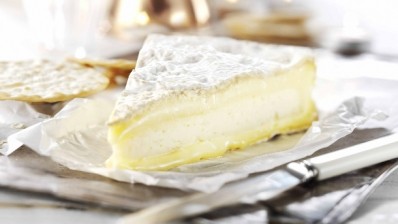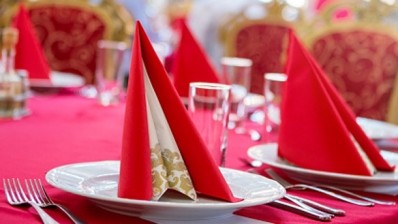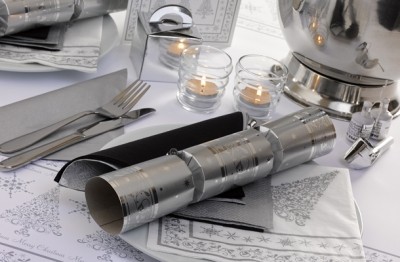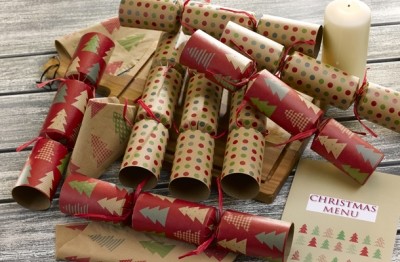ASK THE EXPERTS
How to create the perfect Christmas cheeseboard
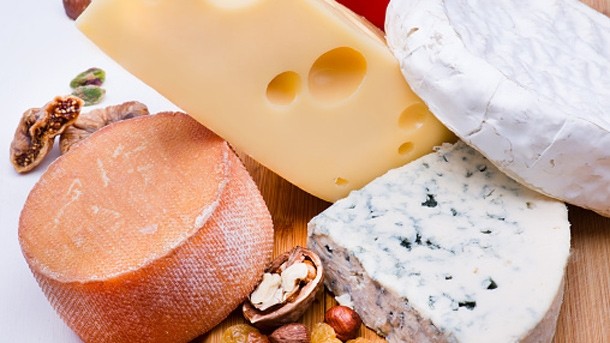
A quality cheeseboard is a Christmas staple – there are few things in life that bring as much joy as a good chunk of cheese. That’s why it’s so important to cater for cheese-lovers properly, there’s a real opportunity here to demonstrate that restaurant knows what it’s doing and is catering for a market that contains a range of differing cheese preferences.
As a general rule, I would recommend avoiding block cheeses and ensure your board varies in strength, texture, and shape, as well as having a variety of milks. Try and use artisan and farmhouse cheeses where you can – they may take more time and money to obtain, but the results are worth it.
Not many people know that cheese, like most food products, is subject to the changing seasons. The flavour of the cheese is ultimately affected by the milk, which in turn is flavoured by what the animal is eating. For your Christmas cheeseboards, I wouldn’t recommend buying younger cheese, instead go for cheese that was made mid-end months of summer.
Also, to minimise wastage of any cheese, ensure it is stored correctly. Cheese needs be served at room temperature so take the cheese out the fridge before it is served to give it enough time to warm slightly. Cheeses are like sponges, they absorb flavours in the air so if you don’t have a separate cheese fridge, try and store them in sealed containers. A handy tip to save on storage space is to keep the cheese in your wine fridge – bottled wine won’t affect the flavour of the cheese, and vice versa – as long as it’s not in the cellar.
Here are my tips to creating the right Christmas cheeseboard for your restaurant:
Basic cheeseboards:
All cheeseboards will include a hard, a soft, a blue, a goat’s cheese and often, something a little smelly and this rule should apply for even the most basic of cheeseboards. For a cheeseboard that’s not too complex and yet cost-effective, I would recommend having four different styles:
- Hard: A cheddar style cheese – not vintage, a 12 month cheddar will still taste good but cost less than a cheese that’s been aged for longer;
- Soft: A brie type cheese – a basic French or British pasteurised brie will work. There’s less wastage compared to unpasteurised cheeses whose texture breaks down when they age and becomes quite runny – pasteurised cheese should hold its shape even at room temperature;
- A goat’s cheese – something cost-effective such as a Chevre Bouche;
- A blue cheese – a good proportion of cheese traditionalists will want a Stilton, so I would recommend a strong blue cheese like Texford & Tebbutt which has lots of blue and a great flavour.
Middle-of-the range cheeseboards:
Again, I would stick with four cheeses and the same format, but there’s room here to spend a little more on slightly more exciting varieties:
- Hard: A mature or vintage farmhouse cheddar style cheese that’s been aged from 18-24 months;
- Soft: For something a bit softer, you can go for an unpasteurised brie. It will run when at room temperature so you need to be more careful when you’re cutting it for the board as wastage will become a factor. A nice farmhouse brie such as Brie de Meaux or a Baron Bigod would be perfect, or alternatively you could have a nice farmhouse camembert like a Tunworth;
- Blue: A real cheese lover will want a proper blue cheese – a soft blue cheese such as Yorkshire Blue is very nice, it’s made to a Roquefort recipe using cow’s milk and is beautifully creamy and flavoursome. You could also choose a smaller cheese such as Burt’s Blue, which comes in small 200g rounds to minimise wastage;
- Goat’s: You can start getting into smaller goats cheeses, which cost more when buying as a whole but minimises wastage because you don’t have to worry about how much you’re putting on the board. There are some visually striking goat’s cheeses that come in cylinders or pyramids and look great on a board. A nice Saint Tola Ash or a Cerney Ash give great colour, and are quite fresh with lovely citrus undertones
Luxe cheeseboards:
If you’re really looking to impress your customers, I would suggest having six different types of cheese to cover all bases. If you’re really looking to show that you know your stuff, there are some fantastic rare and hard-to-source cheeses that any discerning cheese-lover will appreciate.
- Hard: A vintage cheddar is a definite must – something handmade, well-matured with an intense and deep flavour such as Quicke’s Vintage Cheddar that has the long, lingering flavours that come with slow maturing;
- Soft: A high-quality brie such as Waterloo will work very nicely, or alternatively you can go for a farmhouse camembert. If your guests want something a little different, you could pick something like a Winslade which is nice and gooey but holds its shape due to the strip of bark around the outside;
- Blue: Again, a stilton for the traditionalists is the obvious choice, and something like the Colston Bassett is perfect. If there’s room, you can also include a softer, creamier blue cheese such as Burt’s Blue
- Washed Rind: this is a real smelly cheese that’s pungent and strong in flavour. Every cheese board worth its salt will have one! Handmade cheeses are truly delicious, such as the Drunken Burt which uses local milk and is washed with local cider;
- Goat’s: A goat’s cheese made to time-honoured, traditional methods such as Bosworth Leaf is a great addition to any board. The unpasteurised goats milk is wrapped in a chestnut leaf and provides a vanilla, butterscotch flavour with a subtle nutty finish;
- Ewe’s: True cheese enthusiasts will expect a ewe’s milk cheese, and it’s an opportunity to show that you really know what you’re doing. Sheep’s milk cheeses range from the more fuller flavoured such as Pave Cobble, which gets gooey on the outside as it ripens, to the more delicately flavoured cheeses such as Wigmore which is creamier and softer.
Cheese Trolleys:
If you want a beautifully extravagant cheese trolley, you can stay with the six categories of cheese but make sure you have at least two different choices in each category, at a minimum. The maximum is up to you, but the most important factor here is staff training. Staff serving the cheese need to really know the cheese they’re talking about – not just reading it, but tasting it and understanding it. Your cheese supplier should be able to supply this information and provide staff training. Make sure the trolley is well-presented and tidied after every serving.
Accompaniments:
There is absolutely no right or wrong accompaniment for cheese. The more, the better. Personally, I love bread, but some people prefer biscuits. A sweeter biscuit is great for stronger flavours, such as stilton, and you may need a little butter so it isn’t too dry in the mouth.
For jellies and chutneys, just remember that different cheeses harmonise with different flavours. Sweet onion marmalade, for instance, goes very well with blue cheese, but a strong chutney wouldn’t go so well with a delicate brie where you’d be better off with a fig jelly. Try and cater for the different types of cheese you have on your board – you need to complement the cheese, not overpower it.
